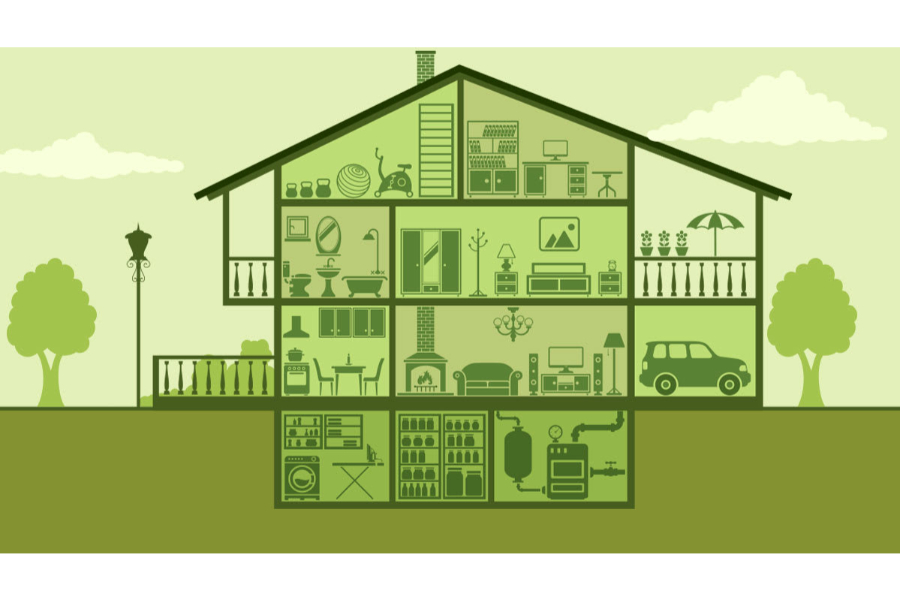Whether you wish to totally redesign your landscape or just make some adjustments, some significant variables need to be considered before planting starts.
While many individuals go directly to the restaurant to browse the selection, creating a plan will assist you to choose crops that best suit your requirements and flourish in your countryside.It’s simple to get out and try to buy crops that look lovely in the garden shop, just to make them feel that their environment is incorrect. These tips assist you to create a plan and to build a lovely, coherent and prosperous environment.
Know your yard: think of your regional climate, your site’s topography and the soil type in your landscape planning. It is an excellent location, to begin with, the USDA Plant Hardiness Zone Map.
Keep in mind that your yard’s particular circumstances may generate a microclimate depending on the sun exposure and the shade of the region. Micro continues to be divided into one of 4 classifications: complete sun, partial shade, shade or shade; take note of the microclimate when you select crops for your landscaping in Eastwood.
It is essential to consider the topography of your site as well as your plans; notice how water drains in the countryside. The finest landscape design will encourage water motion from home to other parts of your yard.
Who is your yard going to use?
Think about who is going to use your yard and how. Will kids use your yard? Did you get animals? Do you expect to use your yard to entertain you outdoors? Note that using strategic plantings and hardening systems, you can generate separate spaces for distinct uses in your countryside. Walking routes can be used for individuals moving from region to region.
As you use your yard and keep it (or hire someone to keep it) consider your maintenance style and budget. Be as realistic as possible. How long are you really going to have to leave in your countryside? Or will you have money to pay someone else to put in the time if you don’t have the time? How much must you spend in your countryside? Finding the response to these issues helps to make your landscape a success in future years.
Think of topics: a subject can unify your landscape and guide your selection of plants and materials. Themes may be as easy as the use of coherent forms in your yard or complicated as the development of a relaxing garden or an oriental garden. A nice place to begin is to look at your home’s architecture in deciding on a subject for your yard. Try to complement the architectural lines and style of your home in your yard; your yard is after all expansion of your home.
Themes can guide how crops, ornaments, hardcovers, and constructions are placed and selected. Do you want many nice, geometric forms and constructions in your scenery? Are you someone? Would you like to make your room more natural and soft lines? Do you want to have only certain colors in a landscape? These questions will assist you to pick a unified garden theme.Create and link rooms Think of it as another space, or rooms, in your home to make the most out of your yard. Just like a house has well-defined and carefully designed rooms, you can generate various’ rooms’ in your countryside using your materials wisely.Remember how you’re going to connect your rooms. How are people going to move from one region to another? Create opportunities for exploration in your yard and maintain individuals moving around the countryside.
Have your crops work for you: you should determine how your crops will work in your environment early in your planning. Plants can also be employed in various ways; fresh and delicious fruits and greens, lovely landscapes, beautiful aromas and many more can be provided. Plants can be used to identify regions within your landscape and to identify the ends of your landscape. By blocking both opinions and the access to an region you may use crops to build a physical obstacle in your countryside. If you want to maintain your opinions, but keep some obstacles open, small increasing crops can be used to build implicit obstacles, to block access but not opinions.
Structure your crops: When choosing crops consider your different visual planes. Think about the overhead plane from the region above you, this could include archways and trees.Moving on to the vertical plane, take account of how close-spaced and far-flung crops are, how layers of crops are laid or staggered (usually bigger plants are used behind lower crops). Don’t forget to fly the floor (including the grouping and arrangement of lower crops and the floor covering and difficulty).
Protect your resources: You can assist safeguard and conserve your environment by selecting resource-efficient crops, handling water deliberately and selecting environmentally sound hard lands.Determine whether those crops really need to be removed, or whether they can be moved to another part of your yard before removing them from your landscape. Look for resource-efficient crops, less water, fertilizers, and pesticides when choosing fresh crops.




